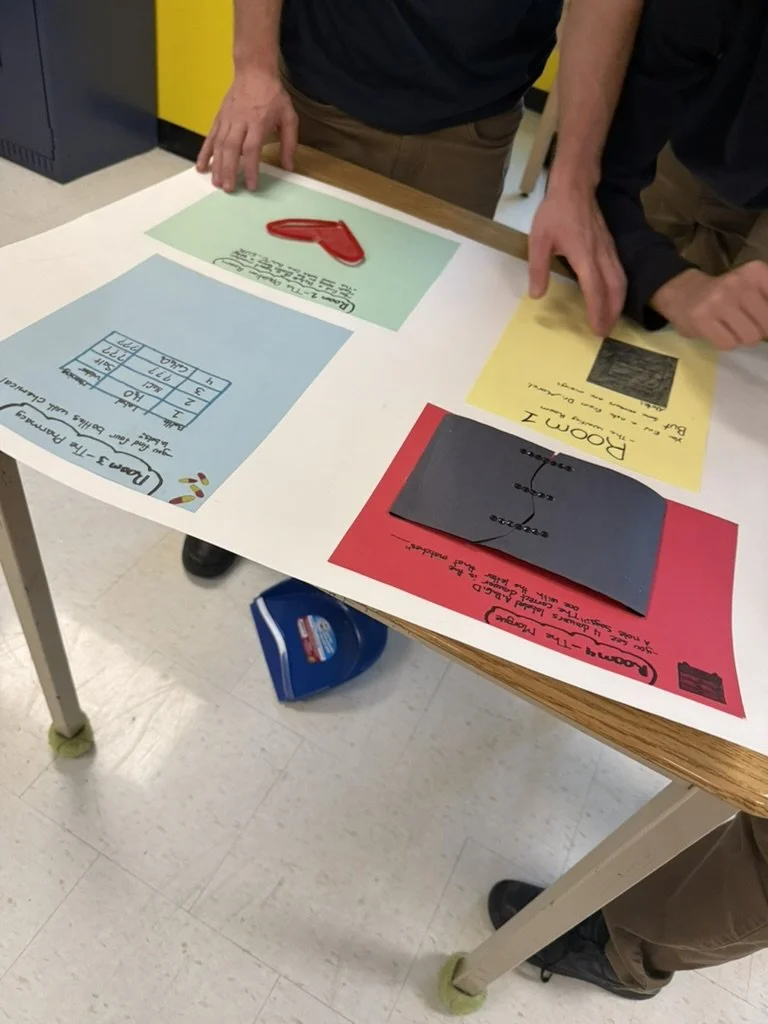When the Classroom Comes Alive: The Power of Escape Rooms in ESL
Imagine walking into a classroom buzzing with energy.
Students are moving around, debating clues, jotting down ideas, and testing solutions — all in English. The walls are covered with riddles, codes, and hidden messages. You can hear spontaneous language use:
“Try this combination!”
“Wait, I think I figured it out!”
“Can someone check if this sentence makes sense?”
This is what an engaged ESL classroom looks like — authentic communication, collaboration, and creativity happening all at once.
What Teachers Strive For in ESL
Every ESL teacher wants the same thing: students who use English with purpose.
We want learners who are not afraid to speak, who listen and respond naturally, who understand the “why” behind every task. Beyond grammar and vocabulary, we aim to help them communicate, think critically, and develop confidence in real-world situations.
Yet, achieving this can be challenging — especially in multi-level classrooms where motivation, skill levels, and learning preferences vary widely. The question becomes:
How can we design lessons that are inclusive, meaningful, and motivating for everyone?
Why Projects Like Escape Rooms Work
That’s where projects like Escaping the Classroom come in. These Escape Room-based activities combine language, problem-solving, and teamwork into one immersive experience. Instead of working on English, students work through English to reach a goal.
During an escape room, learners must communicate to succeed: they describe, hypothesize, clarify, and negotiate — all key competencies in the ESL program. Every task, clue, or puzzle becomes a meaningful language opportunity.
Some of the key benefits:
Authentic language use – students must speak, listen, read, and write for a real purpose.
Collaboration and inclusion – mixed-level teams allow every learner to contribute at their pace.
Critical and creative thinking – learners infer, connect, and create meaning.
Intrinsic motivation – the sense of play and challenge boosts engagement naturally.
Confidence building – success comes from teamwork and communication, not perfection.
In short, escape rooms transform the classroom into an interactive space where language learning feels like adventure — not work.
Bringing It to Life with Our LES: Escaping the Classroom
At ESL-Interactive, we’ve designed a complete Learning and Evaluation Situation (LES) called Escaping the Classroom.
It’s a ready-to-use project that helps teachers introduce, guide, and evaluate an ESL escape-room experience without the stress of building everything from scratch.
Here’s what’s inside:
Step-by-step teacher guide and slides to introduce the project.
Ready-made puzzles, templates, and assessment tools.
Scaffolds for diverse learners and options for differentiated instruction.
A creative phase where students design their own escape room — reinforcing both language and autonomy.
Teachers can adapt the LES to any age or level, whether the goal is vocabulary expansion, reading comprehension, or oral interaction.
Why It Works
When students collaborate to escape the classroom, they’re doing much more than playing a game.
They are:
Engaging with language in context.
Taking ownership of their learning.
Strengthening teamwork and perseverance.
Building confidence to communicate spontaneously.
These are exactly the outcomes ESL teachers aim for — and the reason project-based learning remains one of the most powerful ways to teach a second language.
Ready to Try It?
Bring your ESL class to life with Escaping the Classroom — a project where students solve, create, and communicate in meaningful ways.
Your students won’t just learn English — they’ll live it.
Teach FSL?
Check out our LES for French second language learners, translated by learn Quebec! Find it here!


